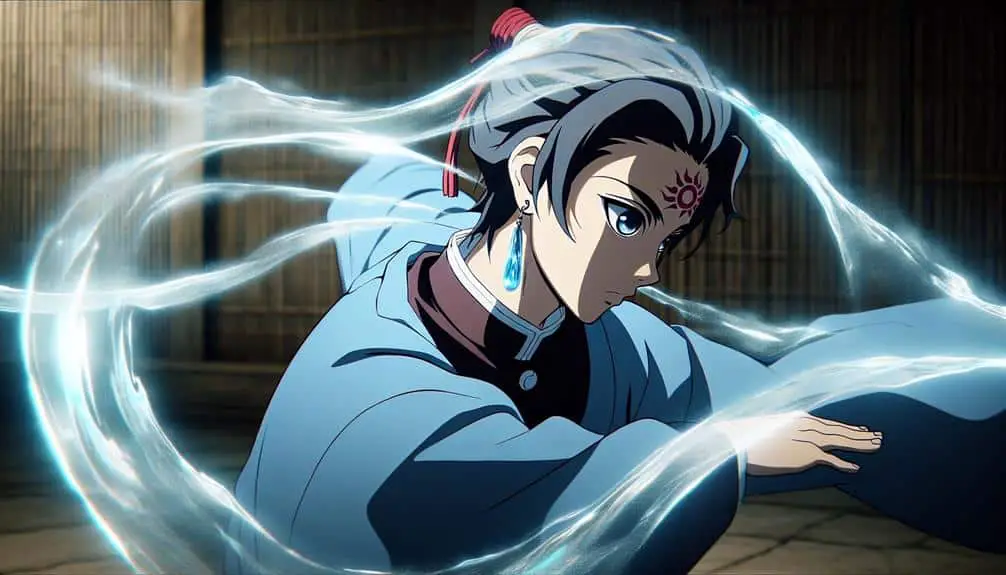In your pursuit of the perfect Nichirin blade, focus on blade construction; it shapes the sword's essence. Pay attention to forging techniques and steel quality for desired capabilities. Customization adds a personal touch. Craftsmanship influences performance, trust in seasoned swordsmiths. Materials impact durability; high-carbon steel excels in sharpness. Size and weight affect balance; choose based on your combat style. Symbolism in color reflects heritage and power. Remember, maintenance is key for lasting sharpness and durability. Your journey through this guide reveals the expertise needed to select your ideal Nichirin blade.
Key Points
- Consider blade construction for desired characteristics and performance.
- Choose high-quality materials like high-carbon steel for durability and sharpness.
- Balance size and weight based on combat style and preferences.
- Understand the symbolism and colors for personal alignment and significance.
- Maintain sharpness and durability through regular care and testing.
Understanding Nichirin Blade Types
To grasp the essence of Nichirin Blade types, discerning the subtleties of their construction is paramount. Blade construction is a meticulous art form that defines the characteristics and capabilities of each sword. The forging process, the type of steel used, and the tempering techniques employed all play essential roles in shaping the final product. Understanding the intricacies of blade customization is also crucial. From the curvature of the blade to the design of the hilt, every element can be tailored to suit the wielder's preferences and combat style.
Mastering the nuances of blade construction allows you to appreciate the craftsmanship and heritage behind each Nichirin Blade. By delving into the details of how these swords are made, you gain a deeper understanding of their strengths and limitations. Similarly, exploring the possibilities of blade customization empowers you to create a weapon that not only reflects your personality but also enhances your performance in battle. Embrace the journey of unraveling the secrets of Nichirin Blade types, for in doing so, you access a world of endless possibilities in the domain of swordsmanship.
Evaluating Blade Material and Quality
Exploring the composition and craftsmanship of Nichirin Blades provides insight into the significance of blade material and quality in determining the sword's performance and durability. Blade craftsmanship is an essential aspect to ponder when evaluating a Nichirin Blade. The meticulous attention to detail in the forging process, tempering, and sharpening of the blade plays a pivotal role in its overall quality. Master swordsmiths devote years honing their skills to create blades of exceptional workmanship, ensuring each sword meets the highest standards.
Material composition is equally vital in evaluating a Nichirin Blade. The type of steel used, the methods of forging, and the heat treatment processes all contribute to the blade's performance characteristics. High-carbon steel is commonly favored for its durability and ability to hold a sharp edge. Understanding the nuances of different steel compositions and their effects on the blade's strength and sharpness is essential for selecting a Nichirin Blade of superior quality. Remember, the blade material and craftsmanship are the foundation of a remarkable sword that will serve you faithfully in battle.
Considering Blade Size and Weight
Considering the dimensions and weight of a Nichirin Blade is essential for understanding its handling and balance in combat situations. When selecting a blade, one must carefully assess the size and weight to make sure it aligns with your combat style and techniques. A blade that's too heavy may impede swift movements, while one that's too light might lack the necessary force in strikes.
To master the art of wielding a Nichirin Blade effectively, it's important to explore customization options that can alter the weight and size of the blade to fit your preferences. This allows for a personalized experience that enhances your combat abilities. Additionally, understanding handling techniques specific to different blade sizes and weights is pivotal for honing your skills and achieving precision in battle.
In terms of maintenance tips and blade care essentials, the size and weight of the blade can impact the frequency and techniques used for upkeep. Ensuring the blade remains in top condition is essential for longevity and performance on the battlefield. By incorporating these considerations into your selection process, you can wield your Nichirin Blade with mastery and finesse.
Examining Blade Color and Symbolism
When selecting a Nichirin Blade, the color and symbolism etched into the blade are significant indicators of its heritage and potential capabilities in battle. Each hue and emblem holds cultural significance deeply rooted in historical origins. The color of a Nichirin Blade often represents the wielder's intrinsic traits and the elemental power they possess. For example, a crimson blade symbolizes strength and determination, while a sapphire one signifies wisdom and intellect. These colors aren't chosen arbitrarily but based on the warrior's essence and affinity with the elements.
Moreover, the symbols engraved on the blade carry ancient meanings that resonate with the wielder's purpose. Whether it be a fierce dragon denoting protection or a serene lotus symbolizing purity, these emblems speak volumes about the warrior's journey and aspirations. Understanding the blade's color and symbolism is essential for aligning oneself with its energy and activating its full potential on the battlefield. Through this profound connection to cultural heritage and historical significance, a warrior can harness the blade's power to achieve victory in combat.
Testing Blade Sharpness and Durability
To assess a Nichirin Blade's efficacy in combat, one must meticulously evaluate its sharpness and durability through rigorous testing procedures. Blade maintenance is essential for ensuring peak performance. Regular sharpening is necessary to maintain the blade edge and cutting ability.
When testing the sharpness of a Nichirin Blade, start by examining its edge under a light source; a sharp blade will reflect light uniformly. Next, conduct a paper test by effortlessly slicing through a sheet to assess the blade's keenness.
To evaluate durability, perform a controlled cutting test on various materials, observing how the blade holds up under different stresses. A durable blade will maintain its sharpness even after repeated use.




